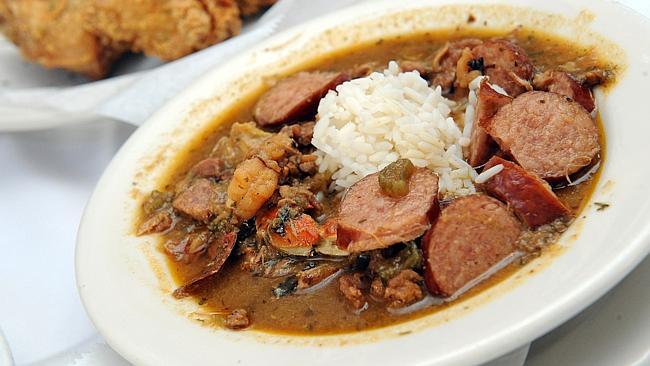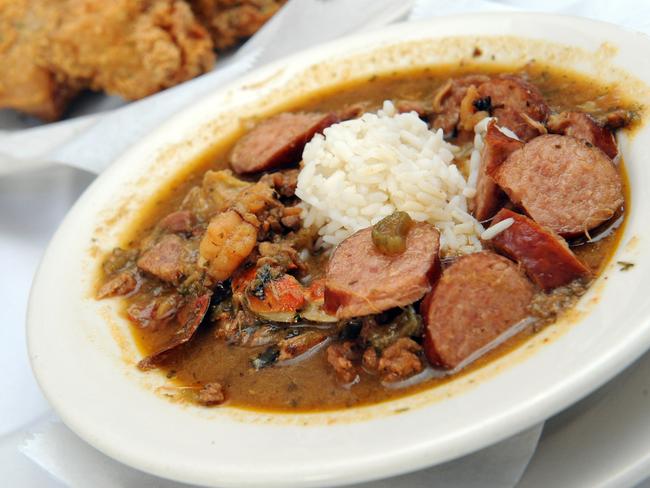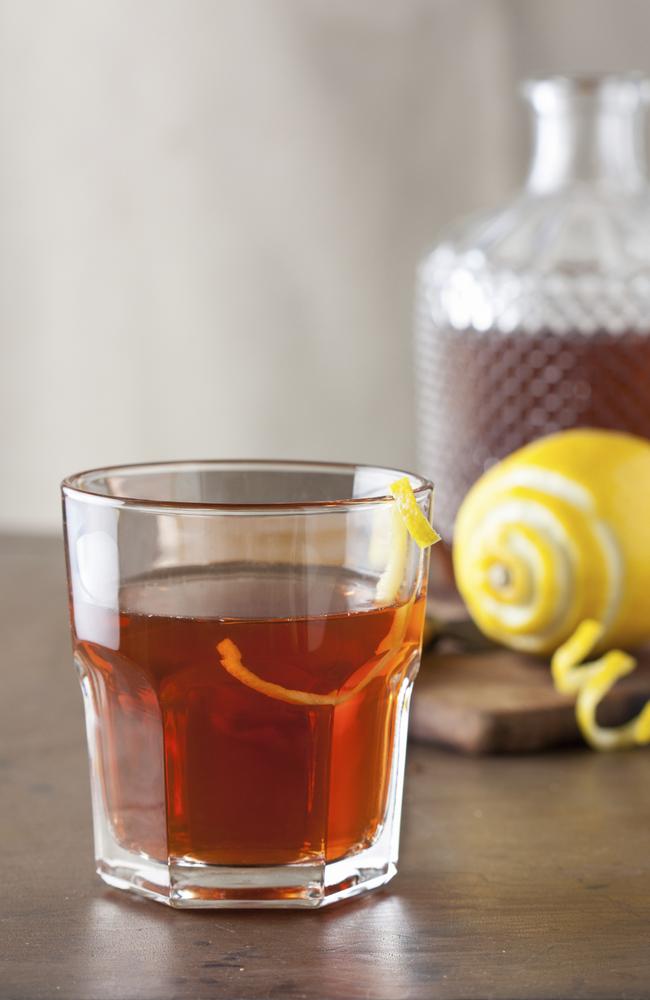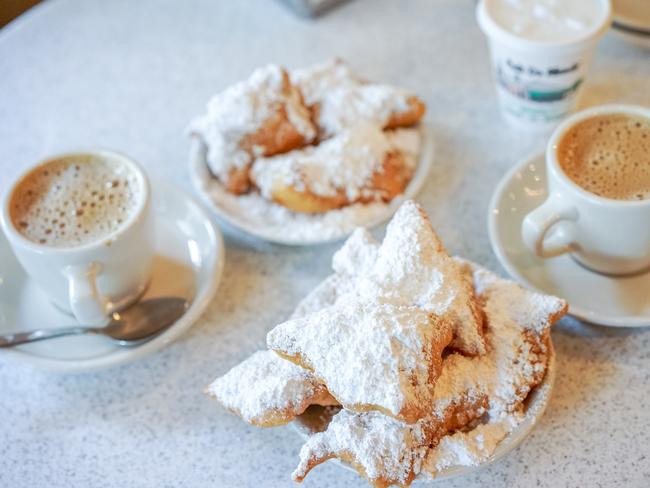If you’re taking a culinary tour of the American deep south, know there’s more than fried chicken on the menu
THE roots of Louisianan food and drink run deep into Cajun and Creole history where you’ll find more than just deep fried chicken.

Lifestyle
Don't miss out on the headlines from Lifestyle. Followed categories will be added to My News.
MENTION southern food and people think “fried”: fried chicken, fried pork rinds, fried onion rings. You can even get fried pickles (addictively good).
Beyond the deep fryer, Louisiana is the only US state that cultivates indigenous cooking traditions. There’s the Creole food of New Orleans, and the more provincial Cajun, which originated along the southern regions of the Bayou State. While both cuisines are getting harder to differentiate, the roots of Louisianan food and drink run deep. Here’s what to know before tackling a culinary road trip through this part of the Deep South.
1. CAJUN versus CREOLE
Cajun and Creole dishes share the same names and use similar ingredients, though their evolutions tell different stories.
Back in 1755, French exiles fleeing British-ruled Acadia in the maritime provinces of Canada found refuge along the bayous and prairies of southwest Louisiana. The Acadians, whose descendants are referred to as Cajuns, survived by living off the land — they’d hold daylong boucheries, butchering and cooking prime cuts of meat in a pot over the fire, while turning byproducts into tasty boudin, a sausage of seasoned rice mixed with liver or blood. Today, even at the height of summer, you can order gravy-smothered brisket for breakfast, and links of smoked pork, alligator, and crawfish boudin (considered a snack food) at roadside cottages like Hackett’s Cajun Kitchen on the Southwest Louisiana Boudin Trail. Running through Lake Charles and surrounding cities, the trail lists over 20 food stops selling specialty foodstuffs like jalapeño cheese boudin balls at Peto’s Deli, sausage jerky at Boiling Point, and traditional boudin, which you can watch being made through a window at Le Bleu’s Landing.
New Orleans, on the other hand, located a two hour’s drive east of Lafayette, was founded by the French in 1718. The bustling port city shifted ownership to Spain, then France again, until America acquired it in the Louisiana Purchase of 1803. New Orleans’ Creole roots are a wonderful mix of French, Spanish, Native American, and African cultures, spiced with Italian, Irish, and Caribbean flavours. The city’s restaurants respect tradition but are not bound by it, meaning you can easily dine on classic French fare atop white linen, or on modern plates in stylish, unfussy dining rooms; from Creole court bouillon and duck deux at Tableau overlooking the French Quarter, to Compère Lapin’s conch croquettes with pickled pineapple tartar sauce, a nod to the Caribbean heritage of classically trained, and a Top Chef fan favourite, Nina Compton.

2. YABBERING ABOUT GUMBO
It’s the popular southern stew cum soup called gumbo that raises passionate debate between Creoles and Cajuns. Made from a base of roux — a thick sauce of fat and flour; the “holy trinity” — bell peppers, celery, and onions; meat and seafood; and always served with rice, the heated disagreement is over roux. Cajuns believe it should be stirred a few shades shy of looking burned, while Creole cooking favours a lighter hue. Furthermore, not only does Creole gumbo use okra as a thickening agent but it also includes tomatoes. Treat your tastebuds to smoked turkey and andouille gumbo at the classic Café Vermilionville in the Cajun capital of Lafayette, and at the venerable Arnaud’s, where the Creole seafood gumbo made with shrimp and crab is tinged red from tomatoes.
3. SMUGGLING OKRA
So, what is okra? These long, lean, ridged green seedpods — called lady’s fingers in England — are known to scare off less-than-adventurous eaters. Why? Because of the slime, or mucilage, emitted when cut — this is what thickens gumbo. According to legend, the vegetable (technically, a fruit) made its way to the American South with the slave trade, who’d hidden seeds in their hair, ears, and belly buttons. Highly nutritious, okra is delicious when roasted or batter fried as heat tempers the sliminess and renders the pods tender. The recently opened Pops Po’ Boys in Lafayette serves fried pickled okra with green onion buttermilk ranch dressing, an excellent side dish to the fried catfish po’ boy sandwich.

4. SIPPING SAZERACS
South Carolina loves its Mint Juleps, but in New Orleans it’s all about the Sazerac, proclaimed the city’s official cocktail by Louisiana Legislature in 2008. Nearly 200 years ago, apothecary owner Antoine Peychaud created his own brand of bitters to soothe upset tummies, and added French brandy, Sazerac de Forge et Fils, plus sugar for taste. A phylloxera outbreak in France’s vineyards forced the switch from cognac to rye whiskey in a change that has stuck ever since. Additionally, the aperitif, Herbsaint, substituted absinthe (an added ingredient) after it was banned in the US in 1912. Sup on both at the gilded Roosevelt Hotel in the old-world Sazerac Bar, where dashing bow-tied bartenders expertly craft a so-named 1840 Sazerac and the newer version.
5. CAFFEINATED CHICORY
Probably the most famous food stop in New Orleans is Café Du Monde, the 24-hour spot that serves freshly fried beignets — crispy pillows of fried dough heaped with powdered sugar — and steaming cups of chicory coffee.
The latter, translated from the French chicorée-cafe, is a tasty twist on traditional black coffee, popularised during the American Civil War when the city’s caffeine supply stopped short with the Union blockade of southern ports. New Orleans, once the second largest importer of coffee beans in the United States, then turned to chicory — a blue flowered herbaceous plant — to leverage its coffee stash. It was found that adding ground baked chicory root to coffee cut any bitterness and gave the hot drink a gutsy kick. Not even the busiest coffee shop in Brooklyn can compete with the lines at Café Du Monde, whose green-and-white striped outdoor terrace has been bustling with locals, tourists … and pigeons since 1862.

6. YE OLDE BREAD PUDDING
“Our bread pudding is the best” declare the wait staff of Louisiana so often, you’d think the hearty dessert originated in the Deep South.
Alas, it was invented in England, when thrifty cooks made use of old bread by mixing it with milk, eggs, sugar and spices to create “poor man’s pudding.”
The recipe speaks to the survivalist ways of Cajuns and New Orleans’ (abundant) local bread tradition, and the recipe has evolved over time to include everything from dried fruits and chocolate chips to rum and bourbon.
Pujo Street Café, a Lake Charles city favourite, makes lovely light bread custard topped with decadent rum sauce (eat it on the Spanish-inspired terrace when the weather is balmy), while New Orleans’ legendary Commander’s Palace is renowned for its Creole bread pudding souffle finished tableside with a pour of warm whiskey cream sauce.
How’s this for a twisted link? The word “pudding” comes from the French boudin, derived from the Latin botellus. Apparently, Medieval Europeans boiled puddings in bags akin to sausage casings. Now that’s a culinary tale come full circle.
The writer was a guest of Brand USA. discoveramerica.com


